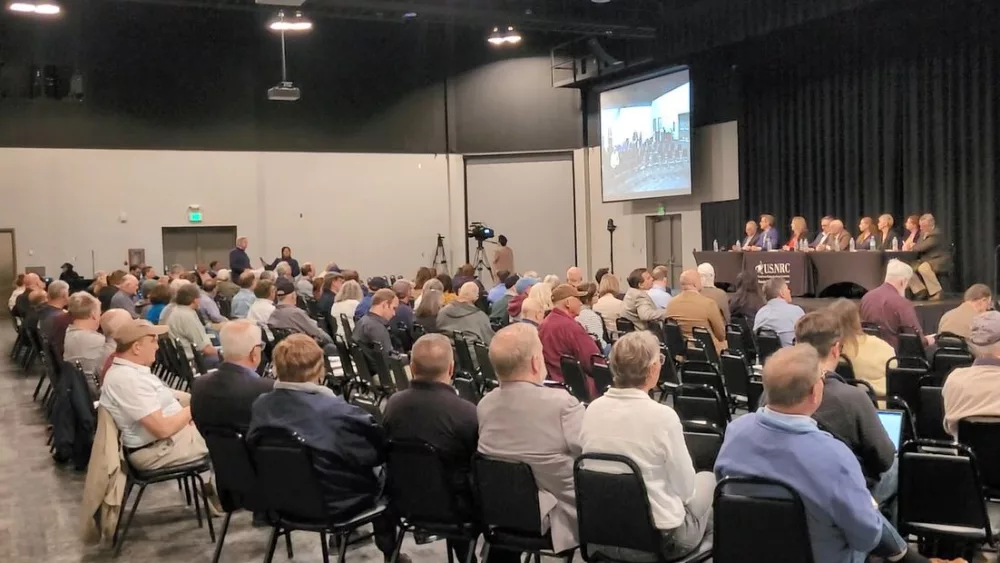If Realtors in Michigan’s Great Southwest are thankful in this holiday season you’ll have to excuse them if their only real enthusiasm stems from the continued higher prices of homes being sold, because it certainly won’t come from the number of houses actually being sold. In fact, an 8-percent fall-off from last year’s levels is what greets the industry as they assess the October performance levels.
Alan Jeffries, Southwestern Michigan Association of Realtors, Inc. Association Executive, tells us, “The dwindling inventory of houses for sale continued to raise the selling prices in Southwest Michigan to record levels in October 2018 and year-to-date.” In fact, he says, “The year-to-date, total dollar volume was also the highest in the year-over-year comparison dating back all the way to 2006.”
Meanwhile, Jeffries continues to point to falling levels in the number of houses sold, saying, “The number of houses sold in October 2018 was down 8-percent from October 2017 (324 vs. 354). Year-to-date, the number of houses sold was down 4-percent (3,056 vs. 3,167).”
Even as month after month reports show fewer houses being sold when compared to the same time a year earlier, prices continue to rise. Jeffries says, “The October 2018 average selling price increased 3-percent to $244,403 from $238,088 in October 2017. The year-to-date, average selling price of $232,016 was a 7-percent increase over the $217,718 year-to-date average selling price in October 2017.”
The median selling price increased 10-percent in October 2018 ($171,000 vs. $156,113). Year-to-date the median selling price was up 5-percent ($162,750 vs. $155,000).
The median price is the price at which 50% of the homes sold were above that price and 50% were below.
With 30 fewer homes sold this October, the total dollar volume dropped 6-percent from October 2017 ($79,186,855 vs. $84,283,224). Year-to-date, total dollar volume was up 3-percent from October 2017 ($709,043,183 vs. $689,513,153).
The local inventory of houses for sale once again decreased 5-percent from a year ago (1,737 vs. 1,830). At the end of October there was 5.8-months supply of houses for sale; down slightly from 5.9-months supply at the end of October 2017. By way of comparison, in October of 2010 there were 3,385 houses for sale, or 16.6-months supply.
The number of bank-owned or foreclosed homes as a percentage of all transactions in October was 5-percent. The percentage of bank-owned or foreclosed homes has been less than 8-percent since March. The highest percentage in any recent October was 34-percent in 2009.
Locally, the mortgage rate increased to 4.937 from 4.827 in September. Last year in October, the rate was 4.125. Nationally, the Freddie Mac mortgage rate in October was 4.83 up slightly from 4.72 in September for a 30-year conventional mortgage.
According to the National Association of Realtors existing-home sales nationwide increased in October after six straight months of decreases. Three of four major U.S. regions saw gains in sales activity last month.
Total existing-home sales, which are completed transactions that include single-family homes, town-homes, condominiums and co-ops, increased 1.4-percent from September to a seasonally adjusted rate of 5.22 million in October. Sales are now down 5.1-percent from a year ago (5.5 million in October 2017).
Lawrence Yun is Chief Economist for the National Association of Realtors. He says increasing housing inventory has brought more buyers to the market. “After six consecutive months of decline, buyers are finally stepping back into the housing market.” He adds, “Gains in the Northeast, South and West – a reversal from last month’s steep decline or plateau in all regions – helped overall sales activity rise for the first time since March 2018.”
The median national existing-home price for all housing types in October was $255,400, up 3.8-percent from October 2017 ($246,000). October’s price increase marks the 80th straight month of year-over-year gains.
Regionally, existing-home sales in the Midwest failed to follow the rest of the country as sales declined 0.8-percent last month to an annual rate of 1.27 million in October, down 3.1-percent overall from a year ago. Just as on the local scene in Michigan’s Great Southwest, however, the median price throughout the Midwest was $197,000, up 2.4-percent from last year.
First-time buyers were responsible for 31-percent of sales in October, down from last month and a year ago (32-percent). The National Association of Realtor’s 2018 Profile of Home Buyers and Sellers revealed that the annual share of first-time buyers was 33-percent.
Yun says, “Rising interest rates and increasing home prices continue to suppress the rate of first-time home buyers. Home sales could further decline before stabilizing. The Federal Reserve should, therefore, re-evaluate its monetary policy of tightening credit, especially in light of softening inflationary pressures, to help ease the financial burden on potential first-time buyers and assure a slump in the market causes no lasting damage to the economy.”
All-cash sales accounted for 23-percent of transactions in October, up from September and a year ago (21- and 20-percent, respectively). Individual investors, who account for many cash sales, purchased 15-percent of homes in October, up from September and a year ago (both 13-percent).
Nationally, the total housing inventory at the end of October decreased from 1.88 million in September to 1.85 million existing homes available for sale, but that represents an increase from 1.80 million a year ago. Unsold inventory is at a 4.3-month supply at the current sales pace, down from 4.4 last month and up from 3.9 months a year ago.
Yun suggests, “As more inventory enters the market and we head into the winter season, home price growth has begun to slow more meaningfully,” and adds, “This allows for much more manageable, less frenzied buying conditions.”
John Smaby, a second-generation Realtor from Edina, Minnesota and Broker at Edina Realty, is President of the National Association of Realtors. He says, “Despite this much-welcomed month over month gain, sales are still down from a year ago, a large reason for which is affordability challenges from higher interest rates.” Smaby adds, “Prospective buyers looking for their dream home in this market should contact a Realtor as a first step in the buying process to help them navigate this more challenging environment.”
The numbers reported for local sales include residential property in Berrien, Cass and the westerly 2/3rds of Van Buren Counties and should not be used to determine the market value of any individual property. If you want to know the market value of your property, you should contact your local Realtor.
The Southwestern Michigan Association of Realtors, Inc. is a professional trade association for real estate licensees who are members of the National Association of Realtors and ancillary service providers for the real estate industry in Berrien, Cass and Van Buren Counties. The Association can be contacted at 269-983-6375 or through their website at www.swmar.com.






